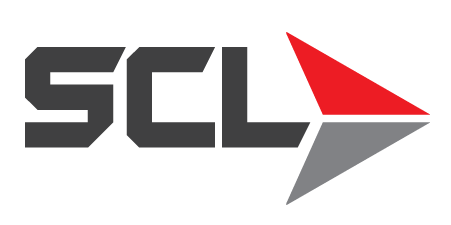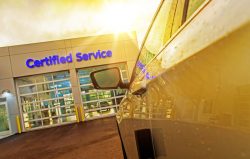Is Absorption Rate Really That Important?
Here’s Why It Should Be An Indicator, But Not The Indicator
Over the past 20 years, the term absorption rate has risen in prominence throughout the automotive industry.
With the changing landscape of dealerships – which have gone from primarily focusing on new and pre-owned car sales to now serving as a one-stop-shop for customers –absorption rate has now become the ultimate indicator for success.
The calculation, which takes into account total parts, service and body shop margins (fixed operations) and total dealership fixed expenses, assumes the parts and service side of your business should cover all operating costs. Sales, as dictated by the equation, should not be relied on to cover any fixed costs at all.
According to Automotive News, “fixed absorption rate is one measurement in which no auto dealer wants to come up short. If a dealership’s fixed operations generate enough net income each month to cover all of its costs – a 100% rate – then all the other pieces of the profitability puzzle go right to the bottom line.”
That paves the way for dealerships to maintain stability in slow months, ensuring long-term success.
But is 100% even realistic? Could dealerships be utilizing precious resources – energy and time – striving to hit a number they will never hit?
SCL Automotive Solutions Specialist Don Parker, who has spent more than 40 years in a number of capacities at dealerships across southern California and one term as a member on the national GM Dealer Fixed Operations Advisory Board, believes absorption rate may garner more attention than it’s due.
Many dealerships either don’t have the resources or don’t offer the support to hit 100%, yet they demand growth in that area. To truly achieve it, it requires not only a well-run fixed operation but also smart financial backing.
“There have been a few stores across the country I’ve seen hit 100%, but there are not a lot,” Parker said. “It takes a really strong service department and body shop and parts department to get there. And all of those pieces have to be well run for many, many years to come close to that mark. … Absorption rate is just one indicator, and from that indicator you have to do much research before you draw a conclusion.”
The national average for absorption rate has hovered below 60% for years, and according to the latest Average Dealership Profile from the National Automobile Dealers Association, it currently sits at 57%.
Factors that Should Demand Your Attention
Regardless of how much stock you put into absorption rate, using it as one indicator of performance is a wise choice, Parker said. The most important focus for all dealerships should always be the customer; growth in every area hangs on that.
As far as absorption rate, there are a few strategies you can utilize for growth including:
• Delivering impeccable service.
• Not focusing primarily on the front of the house – new and used car sales.
• Making way for the parts department, and perhaps even a body shop, to play integral roles.
It’s a simple equation, really. If dealers cannot capture customers at every step on their automotive journey – from buying to financing, service to selling – the absorption rate will suffer or never hit the phantom 100% many desire.
“You have to create lifelong customers, so what’s the best way to do that?” Parker said. “Stores do that a lot of different ways – some create quick-lube facilities, some add body shops. There are tangible things you can do to up that number, but it also doesn’t necessarily mean investing millions of dollars. You have to take a look at what you have and what you can do, and make those things better.”
Strategies for Boosting Absorption Rate
For service departments, that could mean offering a quality multi-point inspection, with customer permission prior to performing the service, at every oil change. That way you are arming customers with information about their vehicles they can utilize to budget for upcoming service. For example, let them know their brake pads are getting low before they need them or their belts are on the verge of needing replacement. Invest in software that allows you to show them photos and graphs of wear and tear. Give them opportunities to plan and they’ll come back, Parker said.
Service departments should also make getting customers in and out for oil changes a priority. If scheduled service takes hours at a time, chances are customers will not leave happy.
Other critical factors for delivering impeccable service include ensuring every employee, from the top to the bottom, knows exactly what is expected of them. Everyone on your team, Parker said, needs to be speaking the same language, quoting the same prices and taking care of tasks in their departments with precision so customers are not an afterthought.
And when it comes to parts, explore additional money-making opportunities like wholesale business, for example, where you sell parts to outside independent shops.
You could even consider creating a business development center, where team members are tasked with staying in constant contact with customers on a regular basis, letting them know when service is due or when there are relevant specials for them to consider.
The Bottom Line
Although absorption rate – similar to the Customer Satisfaction Index (CSI) – should not be the only indicator of how well your dealership is running, it should definitely be considered, Parker said.
But even then, the actual number – the statistic – should not be the primary concern. What should demand dealers’ focus is delivering a well-rounded experience to customers. When that occurs, absorption rate will naturally increase.
In Automotive News, Rick Ford, CEO of RFJ Auto Partners, put it this way: “We, as dealers, most of us and most of our general managers came up on the sales floor, so we’re more comfortable there. We’re more comfortable thinking about, ‘How do we sell another car?’ when what we really need to be thinking about is, ‘How do we repair another car?’ How do we retain that customer, and how do we grow that part of our business?”
Contact an SCL Consultant today
In a wide range of automotive, industrial and commercial sectors, SCL remains steadfast on its commitment to product and industry knowledge, performance satisfaction and superior logistics. We protect and optimize the machines that keep our country moving. For more information on how we help can help with services including bulk purchasing or managing inventory, contact an SCL expert today.

